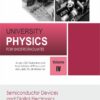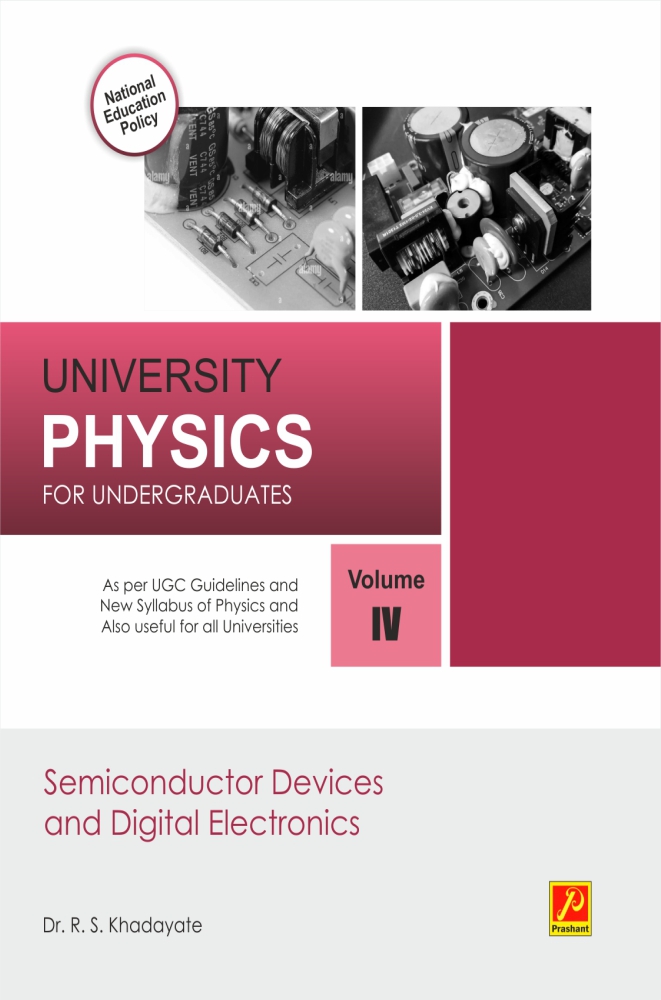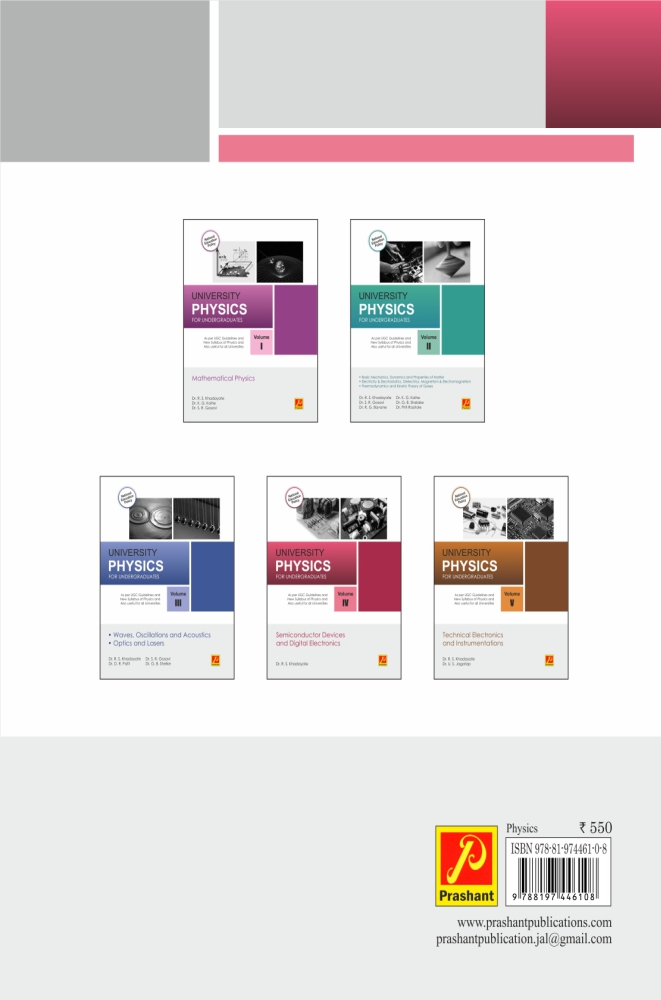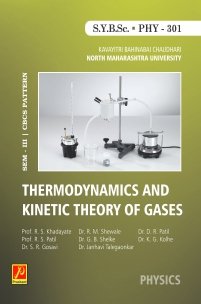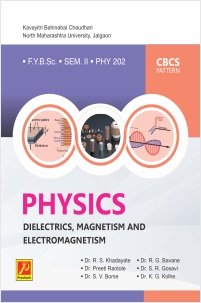University Physics for Undergraduates
(Volume IV)
Authors:
ISBN:
₹550.00
- DESCRIPTION
- INDEX
Physics is the fundamental science that seeks to understand the natural laws governing the universe. Its principles form the basis for countless technological advancements and scientific inquiries that shape our world. This reference book aims to serve as a comprehensive guide for students, educators, and professionals who seek to deepen their understanding of this dynamic field.
I am very glad to present this book “University Physics for Undergraduates (Volume-IV)”. Our objective in creating this book is to offer a detailed and systematic knowledge related to topics Semiconductor Devices and Digital Electronics. This book is written by keeping in mind the curriculum prescribed by UGC.
To develop interest of learners, diagrams and solved examples are given in each chapter. At the end of each chapter, multiple choice questions, short answer questions and long answer questions are provided. The book is written in simple and lucid language.
This book is the result of contributions from numerous experts in various subfields of physics, whose insights and expertise have enriched its content. We extend our gratitude to these individuals for their dedication and hard work.
1. Semiconductor Diodes
1.1 Introduction, 1.2 Revision of Semiconductor Physics, 1.3 P.N junction diode, 1.4 Formation of Depletion Layer and Barrier Potential, 1.5 Applying voltage across P –N junction, 1.6 I-V Characteristics of p-n junction diode, 1.7 Junction breakdown, 1.8 Limitations in the operating conditions of P-N junction,
1.9 Static and Dynamic resistance of P – N junction diode, 1.10 Diode Equation, 1.11 Zener diode, 1.12 Light Emitting Diode (LED), 1.13 Photo diode,
1.14 Solar cell.
2. Rectifiers and Power Supplies
2.1 Introduction to rectifiers, 2.2 Half wave rectifier, 2.3 Full wave rectifier,
2.4 Full wave bridge rectifier, 2.5 Ripple Factor – (r), 2.6 Filters, 2.7 D.C. Power Supply (Regulated and Unregulated), 2.8 Zener diode as voltage regulator.
3. Bipolar Junction Transistors
3.1 Introduction, 3.2 Basic construction of bipolar transistors (NPN and PNP), 3.3 Transistor biasing, 3.4 Origin of name of transistor, 3.5 Operation of n – p – n transistor, 3.6 Transistor configurations (or connections), 3.7 Transistor static characteristics, 3.8 Transistor load line analysis.
4. Transistor Biasing and Transistor Amplifiers
4.1 Transistor Biasing, 4.2 Methods of Transistor Biasing, 4.3 Concept of Amplifier, 4.4 Classification of Amplifier, 4.5 Single Stage and Multistage Amplifier, 4.6 Single Stage RC coupled Common Emitter amplifier, 4.7 Important Terms, 4.8 Definition of Voltage and Power Amplifiers, 4.9 Classification of amplifiers in terms of “class”.
5. Transistorized Sinusoidal Oscillators
5.1 Introduction, 5.2 Oscillatory (Tank) Circuit, 5.3 Concept of feed back and types of feed back, 5.4 Barkhausen Criterion or Condition, 5.5 Type of Oscillators, 5.6 Hartley Oscillator It is LC type oscillator, 5.7 Generation of oscillations in RC Oscillators, 5.8 Phase Shift Oscillator, 5.9 Limitations of LC and RC Oscillators.
6. Semiconductor Switching Devices
6.1 Introduction, 6.2 Field Effect Transistor, 6.3 Introduction to MOSFET, 6.4 Applications of FET, 6.5 Unijunction Transistor, 6.6 UJT as a switch,
6.7 UJT as a Relaxation Oscillator, 6.8 Silicon Control Rectifier (SCR), 6.9 SCR as a Switch, 6.10 SCR as a Controlled Rectifier.
7. Digital Electronics-I
7.1 Introduction, 7.2 Decimal number system, 7.3 Binary number system, 7.4 Binary Arithmetic, 7.5 1’s and 2’s Complement of binary number, 7.6 Subtraction using 1’s compliment and 2’s compliment, 7.7 Concept of positive and negative logic, 7.8 Introduction to logic gates, 7.9 Basic Adders and Subtractors, 7.10 Demorgan’s Theorems, 7.11 NAND and NOR realization of logic gates, 7.12 Simplification of logical expressions (functions), 7.13 Boolean Algebra, 7.14 Basic laws of Boolean Algebra, 7.15 Boolean algebraic theorems, 7.16 Simplification of different Boolean equations, 7.17 Representation of logical function, 7.18 Karnaugh map (K-map), 7.19 Design examples using Karnaugh-map.
8. Digital Electronics-II
8.1 Introduction, 8.2 R-S flip flop using NAND gates, 8.3 R-S Flip-Flop using NOR gates, 8.4 Clocked RS flip flop using NAND gates, 8.5 Negative clocked RSFF, 8.6 Concept of ‘PRESET’ and ‘CLEAR’ inputs in the flip flop, 8.7 J-K Flip flop using NAND gates, 8.8 Propagation delay and race around condition, 8.9 Idea of edge triggering flip – flop, 8.10 Symbol for positive and negative edge triggering flip flop, 8.11 Introduction, 8.12 Asynchronous Counter, 8.13 Synchronous Counter, 8.14 A single flip flop acts a Mod – 2 counter (or divide by two counter), 8.15 Modulus of counter, 8.16 Mod – 3 counter, 8.17 Mod – 5 counter, 8.18 Decade counter, 8.19 Multiplexer, 8.20 Demultiplexer, 8.21 Decoders, 8.22 Encoders, 8.23 IC 555, 8.24 Concept of multivibrator.

